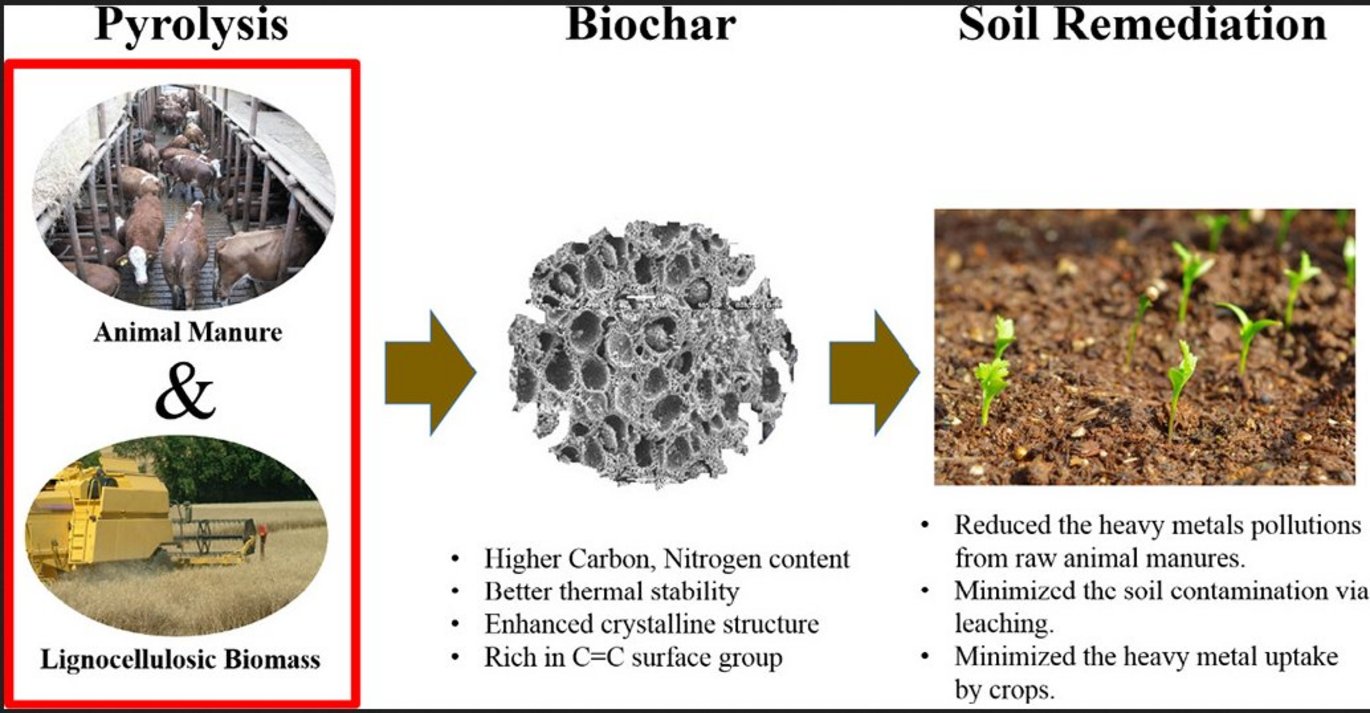Utilization of current pyrolysis technology to convert biomass and manure waste into biochar for soil remediation: A review
New publication by Tan, Shimeng; Zhou, Guoying; Yang, Quan et al.

Abstract:
Traditional disposal of animal manures and lignocellulosic biomass is restricted by its inefficiency and sluggishness. To advance the carbon management and greenhouse gas mitigation, this review scrutinizes the effect of pyrolysis in promoting the sustainable biomass and manure disposal as well as stimulating the biochar industry development. This review has examined the advancement of pyrolysis of animal manure (AM) and lignocellulosic biomass (LB) in terms of efficiency, cost-effectiveness, and operability. In particular, the applicability of pyrolysis biochar in enhancing the crops yields via soil remediation is highlighted. Through pyrolysis, the heavy metals of animal manures are fixated in the biochar, thereby both soil contamination via leaching and heavy metal uptake by crops are minimized. Pyrolysis biochar is potentially use in soil remediation for agronomic and environmental co-benefits. Fast pyrolysis assures high bio-oil yield and revenue with better return on investment whereas slow pyrolysis has low revenue despite its minimum investment cost because of relatively low selling price of biochar. For future commercialization, both continuous reactors and catalysis can be integrated to pyrolysis to ameliorate the efficiency and economic value of pyrolysis biochar.
